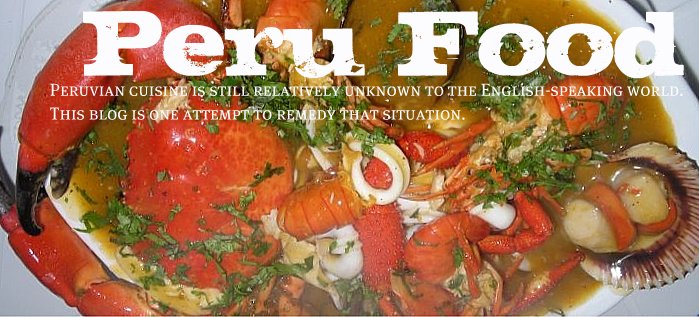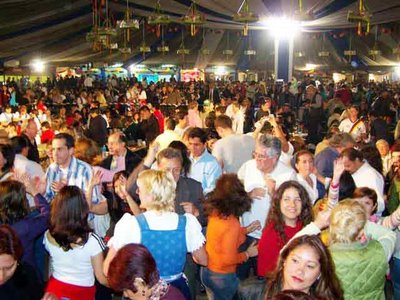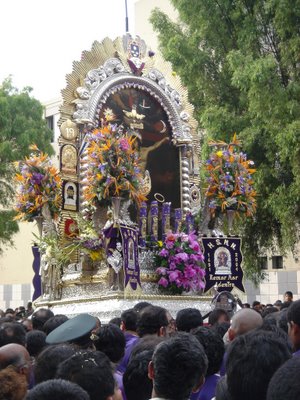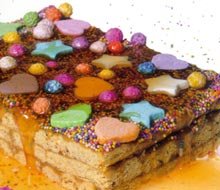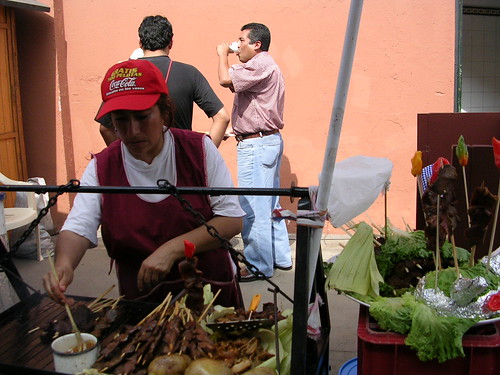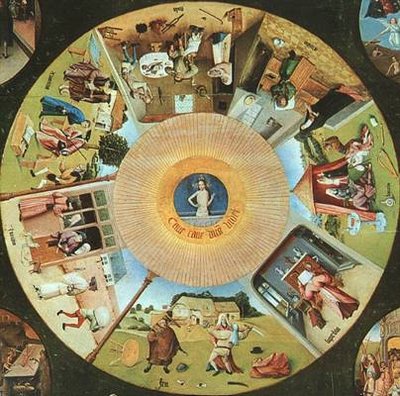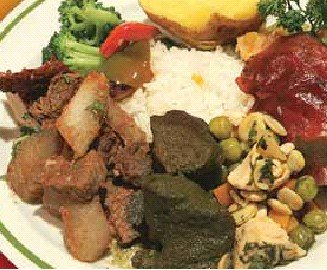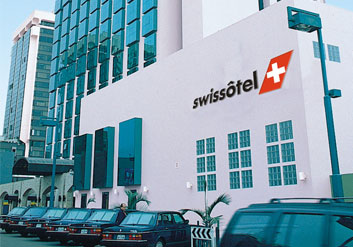Welcome to our first post-Peru post.
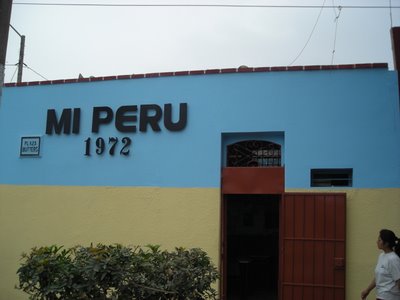
If I'm writing about Peruvian cooking, why not start my gastronomic tour of Lima at a place called Mi Perú?
Located in a corner of the Plaza Butters in the seaside district of Barranco, Mi Perú is a small, traditional, family-run restaurant that has a limited but excellent menu. It's blue facade proudly wears its name and the year of its founding.
I first heard about Mi Perú about a year ago, and put a post about it on this blog. The link is at the end of this post.
For almost a whole year, I have been eagerly awaiting my first visit to Mi Perú.
Often, expectations lead to disappointment. I am glad to report, this beloved restaurant met all my expectations.
Inside, Mi Perú doesn't seem like much. The daily specials are listed on a chalkboard. There are not too many tables, and less booths. One wall is covered with countless business cards from previous diners. Shelves line the walls, holding wines and spirits. They make a mean Absolut and tonic there, which I didn't expect.
The decor is somewhere between quaint and kitsch. Some of the decorations seem as if they may have been hanging since the restaurant opened in 1972. But, don't get me wrong. The atmosphere is warm and inviting, a cozy kind of place, full of regulars who banter with the staff.
Open only for lunch, the restaurant fills up daily, so if you're going, it is better to get there earlier than later, or you run the risk of not getting a table. The service is as to be expected at this type of small, family-run restaurant that is also very busy. Items are brought to your table as soon as they appear from the kitchen.
The joint closes when the food runs out.
Make sure to click on the photo below to get the full effect of this wonderful crab dish.
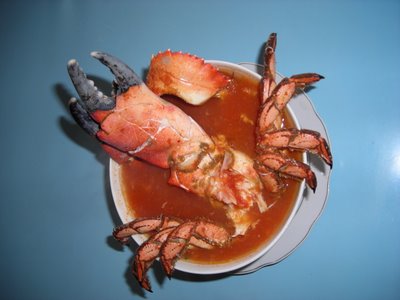
Mi Perú has one great specialty, concentrado de cangrejo, made with small crabs typical of Northern Peru, cracked open and cooked just the right amount of time in a reduced herbal tomato sauce that impregnates the crab meat with its rich flavor.
This is truly one of the great dishes we sampled on our recent trip to Peru, and what serendipity it was in such a huarique, or hole-in-the-wall. With all due respect for the holes-in-the-wall of the world. They often have the best food, as in this case.
I was graciously invited to visit the kitchen of Mi Perú. The owner and founder, Aida Cerreños Vázquez, was busy working in the small space where culinary perfection was being realized. Her late husband opened the restaurant over 30 years ago, and now she and her two sons run it. She learned her technique for cooking crab in this fashion during her childhood in Northern Peru, although she's now been living in Lima most of her life. 
Just in case I wasn't convinced, I was shown exactly how fresh the crabs were.
Mi Perú also specializes in ceviches. I also saw some people devouring a roe omelette.
As I said, Mi Perú lived up to all my expections. In flavor, atmosphere, hospitality, and price, it was an excellent demonstartion of solid, flavorful, home-style Peruvian cuisine at its best.
Click here to read more a previous post about Mi Perú.
Mi Perú
Especialidad en Concetrados de Cangrejos y Cebiches
Avenida Lima 861
Esquina Plaza Butters
Barranco
247-7682
Peru.Food@gmail.com
.
.
.
TAGS: Peru, Peruvian, food, cooking, cuisine, cocina, comida, gastronomía, peruana
